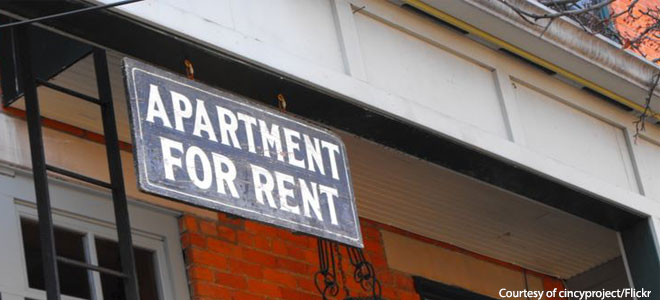
I recently co-authored a study on family homelessness and housing instability in the Capital Region. The aim of the study was to figure out, or get a rough estimate of, how many families with dependent children are experiencing or facing homelessness and to find how it impacts their lives. A really important part of this study was having focus groups with families who are or have experienced homelessness.
Families told us about how the income assistance they get from the province didn’t provide them with enough income to pay for housing, let along any other necessities. Families with caregivers that were working told us about how low wages made it difficult to cover all their living costs.
So what do the numbers tell us?
A family of four on income assistance receives $401.06 per month and an additional $700.00 for a shelter allowance – that’s $1,101.06 per month. National Occupancy Standards (NOS) require a family of 4 to have a 3 bedroom unit. The Canadian Mortgage and Housing Corporation (CMHC) tells us the average rent for a three-bedroom apartment in Greater Victoria is $1,317/month.
$1,101.06 – $1,371 = -$269.94 It seems pretty clear to me that the numbers don’t add up.
Cheaper options are currently unavailable. There was is a 0.0% vacancy rate for 3 bedroom units in the $1000-$1099 price range. There are currently NO UNITS that might be even marginally affordable for this family. It’s obvious these families on income assistances have no extra money.
Maybe the caregivers in this family should get a job you say! Based on our current minimum wage of $10.25/hr., a lone parent working 35 hours a week makes $1,435/month before tax income.
$1,435 – 1,371 = $64.00 – So if you’re working minimum wage and you’re paying $1,371/month in rent the remainder isn’t even enough to cover an $85/month bus pass.
I am talking about poverty here. When we talked to families, it was impossible to separate the lack of affordable and appropriate housing from having low-incomes. For the most part, the sources of low-incomes are through our social safety net or low-waged jobs in a tight labour market.
What I have described here is just the tip of the iceberg. As someone who researches socio-economic trends for the region, I am always astounded by how many people are barely surviving in our region. While rental subsidies are available through BC Housing which certainly help but not all families in need qualify for subsidies. I want to leave you with some quotes directly from the families who participated in our study.
“… it is a lot of work being poor, it really is. I spend more days just working on just getting through the freakin day keeping a roof over our head.”
“When [people] hear our stories on a personal level they are shocked because they assume all those social safety nets are working.”
“So I think that education and that information getting out there is a huge way of preventing it and changing the perception about why people live in poverty. You know sure some of it is because of drugs but a lot of it is because of mental health, a lot because of split up families, a lot of it is because we have a $10.25 minimum wage.”
– Marika Albert, Community Social Planning Council
Read the report:
